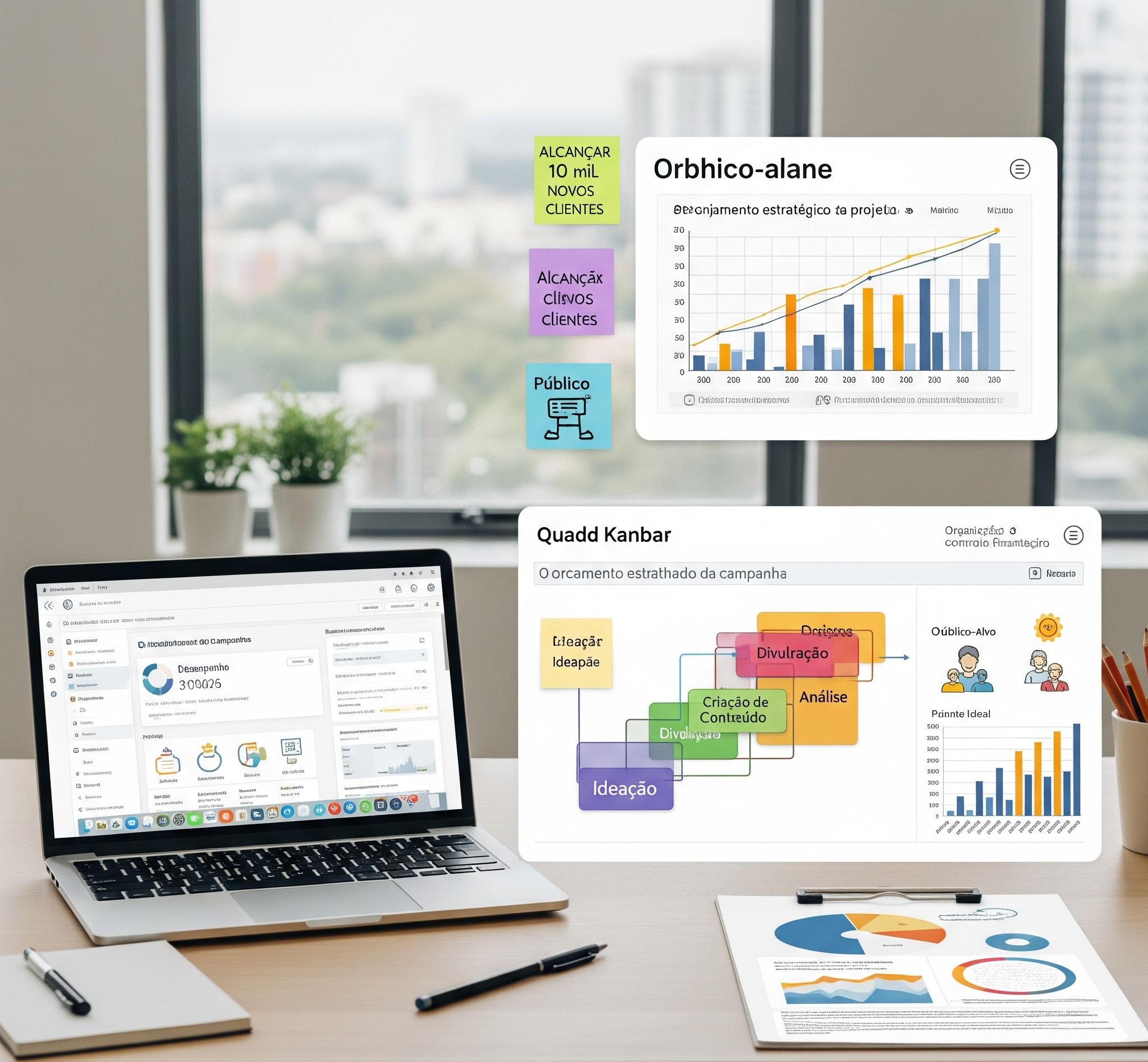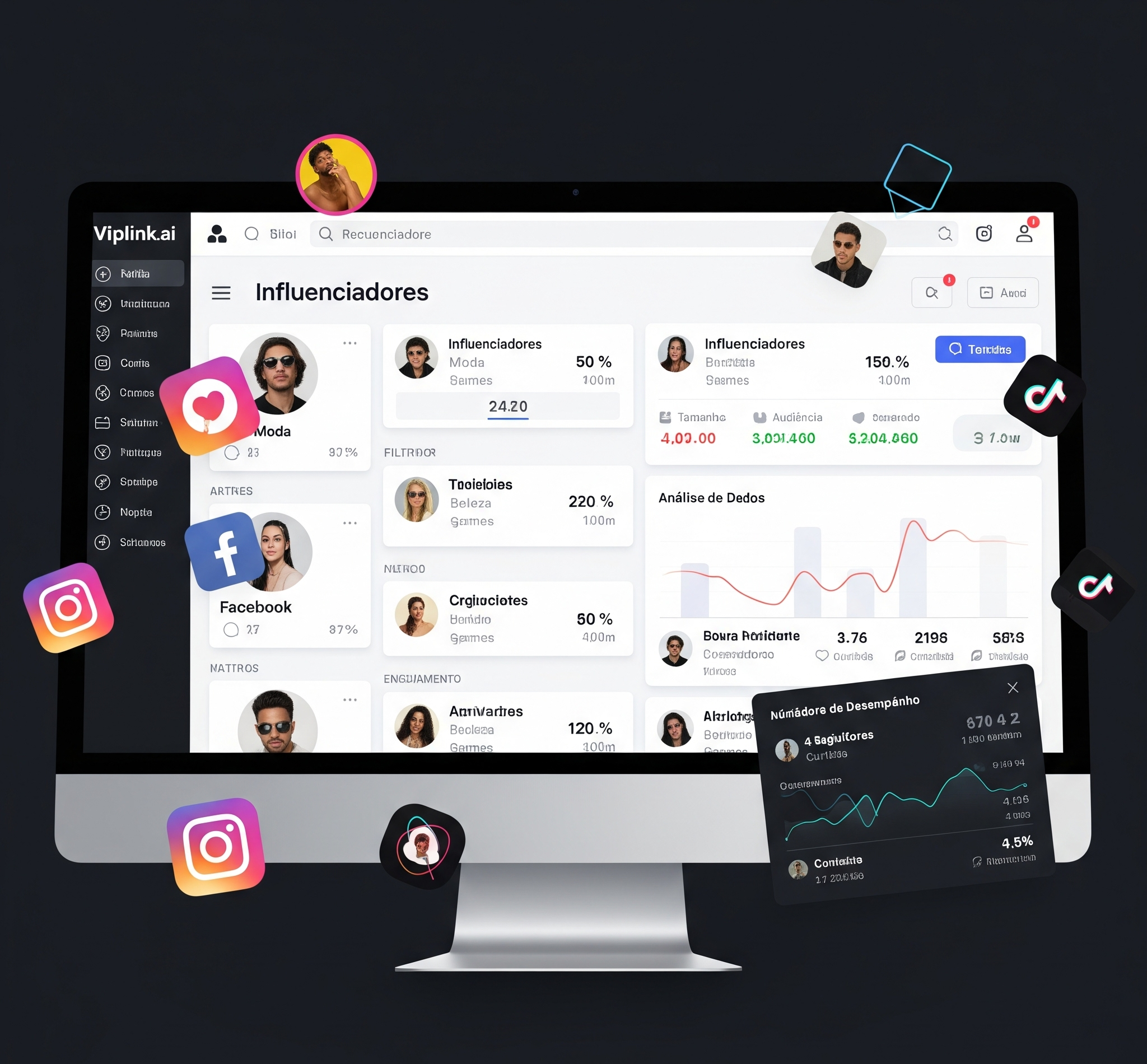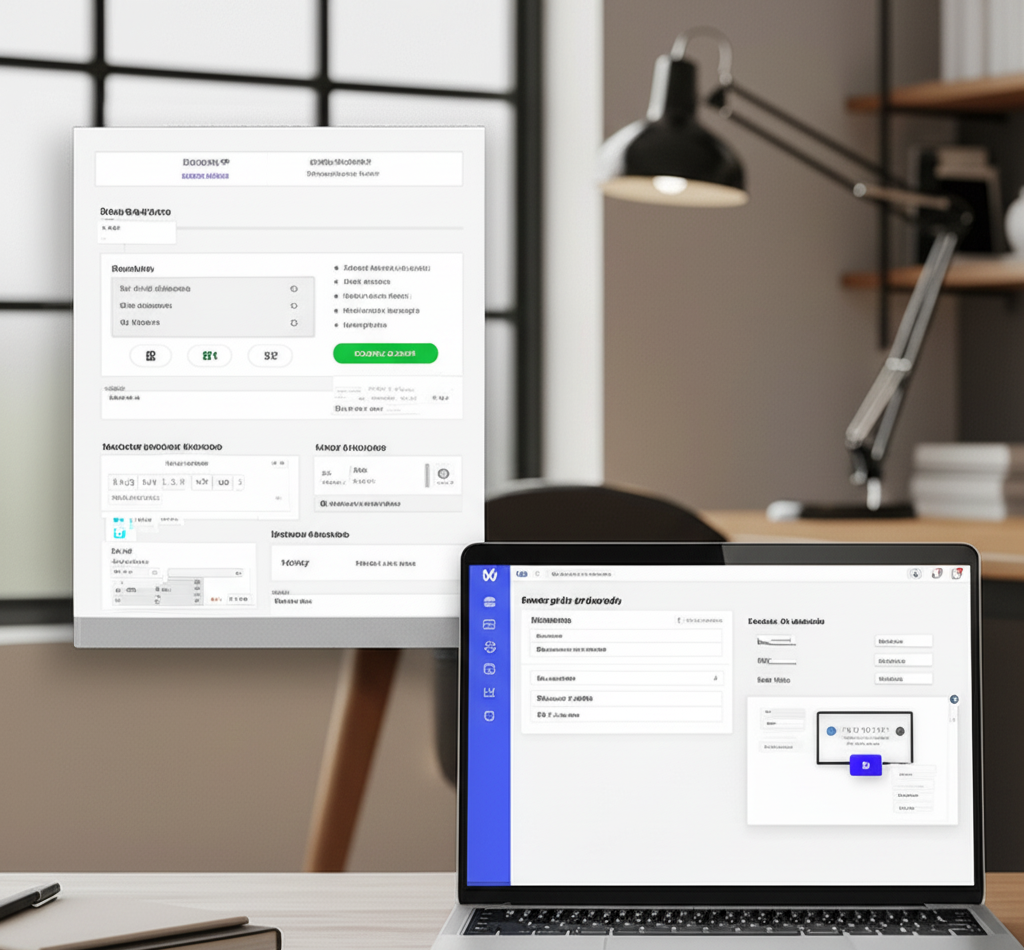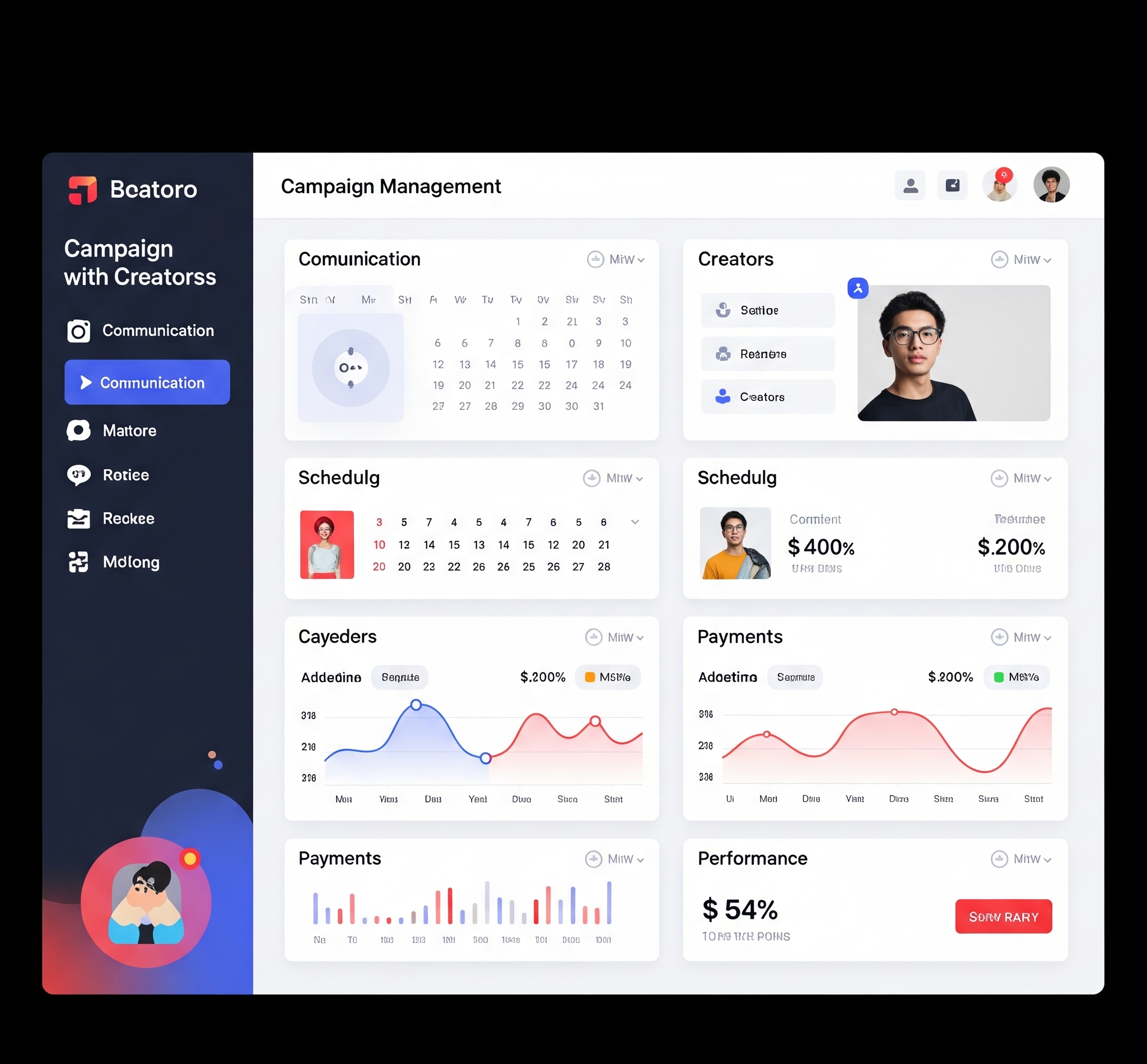How to Launch Creator Campaigns Quickly
A Practical Guide to Agility in Influencer Marketing
In today's competitive landscape, speed is often a decisive advantage. For brands looking to capitalize on fleeting trends, respond to seasonal events, or simply maintain a consistent rhythm of authentic communication, the ability to launch influencer marketing campaigns quickly is crucial. However, the traditional process—from identifying and negotiating with creators to content approval and results analysis—can be notoriously slow and complex. How, then, can you overcome these bottlenecks and implement creator campaigns with the agility the market demands?
Launching campaigns quickly doesn't mean sacrificing quality or strategy. On the contrary, it's about optimizing processes, using the right tools, and adopting an agile mindset to transform ideas into concrete actions in the shortest possible time, without compromising impact or authenticity. The good news is that, with the right approach and adequate technological support, it's perfectly feasible to significantly reduce the launch time of your campaigns.
In this practical guide, we'll explore step by step how you can accelerate the launch of your creator campaigns. We'll cover everything from efficient strategic planning to optimized execution, highlighting the tools and tactics that allow you to move with speed and precision in the dynamic world of influencer marketing. Get ready to discover how to transform agility into your new competitive advantage.

Step 1: Lean and Focused Strategic Planning
Agility begins with clear planning that isn't excessively bureaucratic. Before even thinking about creators or content, define campaign objectives in a concise and measurable way. What do you want to achieve? Increase brand awareness? Generate leads? Boost sales of a specific product? Promote an event? Having clarity about the main objective avoids back-and-forth and directs all subsequent decisions.
Next, define your target audience with precision. Who do you want to reach with this campaign? What are their interests, demographics, and preferred platforms? This will directly inform creator selection and the type of content to be produced. The more specific the audience, the easier it will be to quickly find the right creators.
Establish a clear and realistic budget. Knowing exactly how much you can invest in the campaign from the outset avoids prolonged negotiations or the need to seek additional approvals in the middle of the process. Consider not only direct costs with creators but also the costs of tools, production (if any), and potential paid promotion.
Finally, create a realistic but challenging timeline. Set clear deadlines for each stage of the process: creator research, contact and negotiation, briefing development, content creation and approval, launch, and analysis. Having a visible timeline for everyone involved helps maintain focus and identify potential bottlenecks in advance. The key here is to be lean: focus on the essential elements of planning, avoid unnecessary meetings, and use standardized templates or processes whenever possible.

Step 2: Efficient Creator Recruitment and Selection
The search and selection of creators is often one of the most time-consuming stages. Doing this manually—researching on each platform, analyzing profiles one by one, and contacting individuals—can take weeks. Accelerating this process requires the intelligent use of technology and data.
This is where influencer marketing platforms demonstrate their immense value. Tools like Viplink.ai and others in the market offer extensive databases of creators that can be filtered by niche, platform, audience size, audience demographic data, engagement rates, and even performance history. Instead of time-consuming manual searches, you can identify a list of potential candidates in a matter of minutes.
Beyond active (outbound) search, consider passive (inbound) recruitment strategies. Create a page on your website where creators interested in collaborating with your brand can sign up. This generates a pool of pre-qualified talent that already demonstrates affinity with your brand. Some platforms also facilitate the discovery of creators who have already mentioned or organically used your products—these are often the most authentic and effective partners.
When making contact, be direct and clear about the campaign proposal, scope of work, budget, and deadlines. Use email templates or standardized (but customizable) messages to streamline initial communication. Management platforms often integrate communication tools, centralizing conversations and avoiding information loss across multiple inboxes.

Step 3: Clear Briefing and Simplified Approval Process
An incomplete or ambiguous briefing is a recipe for delays. It leads to rework, multiple rounds of revision, and frustration for both the brand and the creator. To streamline, invest time in creating a concise but complete briefing.
- Campaign Objectives: Reiterate what you expect to achieve.
- Key Message: The essential points that need to be communicated.
- Target Audience: Who the content is intended for.
- Brand Guidelines: Do's and Don'ts, tone of voice, mandatory visual elements.
- Deliverables: What exactly the creator needs to produce.
- Call-to-Action (CTA): What the audience should do after viewing.
- Deadlines: Due dates for draft delivery and final publication.
- Legal/Disclosure Requirements: Clear instructions on partnership disclosure.
Use standardized briefing templates to ensure consistency and agility. Many influencer marketing platforms allow you to create and share briefings directly with selected creators.
The content approval process is another common bottleneck. Avoid multiple layers of internal approval whenever possible. Designate a clear focal point responsible for review and feedback. Set short deadlines for feedback (e.g., 24-48 hours). Provide clear and actionable feedback, consolidating all revisions in a single communication to avoid confusion.

Step 4: Leveraging Technology for Management and Analysis
Manually managing communication, product shipping (if applicable), payments, and performance tracking for multiple creators is extremely inefficient. Technology is the key to scaling and accelerating campaign management.
Use a centralized platform to manage the entire campaign lifecycle. This includes:
- Communication: Keep all conversations with creators in one place.
- Content Management: Receive, review, and approve content.
- Scheduling: Coordinate publication dates.
- Payments: Automate or simplify the process of paying creators.
- Performance Tracking: Monitor key metrics in real-time or near-real-time.
Robust platforms offer intuitive dashboards that consolidate performance data from all creators and posts, eliminating the need to collect reports manually or rely on complex spreadsheets. The ability to generate reports quickly is essential to demonstrate the campaign's value and justify future investments.

Step 5: Adopting an Agile and Iterative Mindset
Finally, launching campaigns quickly requires a mindset shift. Instead of seeking absolute perfection in every detail before launch (which can lead to analysis paralysis), adopt a more agile and iterative approach.
This means being willing to launch an initial version of the campaign (a "Minimum Viable Campaign," if you prefer) and optimize it based on initial performance data. Closely monitor results in the first few days and be prepared to make quick adjustments: perhaps boost the best-performing posts, adjust messaging based on comment feedback, or even pause collaborations that aren't performing as expected.
Foster a culture of open and rapid communication within the team and with creators. Use efficient collaboration tools and establish clear processes for quick decision-making.
Be prepared to learn from each campaign. Not every campaign will be a resounding viral success, but each offers valuable learnings. Analyze what worked well and what can be improved for the next iteration. Agility also lies in the ability to learn and adapt quickly.
Conclusion: Speed as Strategy
Launching creator campaigns quickly isn't just a matter of operational efficiency; it's a competitive strategy. It allows brands to be more relevant, capitalize on market opportunities, and maintain a consistent and authentic presence with their audience.
By implementing lean planning, optimizing creator recruitment with technology, simplifying briefing and approval processes, leveraging centralized management platforms, and adopting an agile mindset, it's possible to drastically reduce the time needed to take a campaign from concept to execution.
Tools like Viplink.ai, with their focus on real-time recruitment and simplified approval, are specifically designed to facilitate this agility. By integrating the right technology with optimized processes, your brand can not only launch campaigns faster but also do so more effectively, generating better results and staying ahead in the dynamic ecosystem of influencer marketing.


